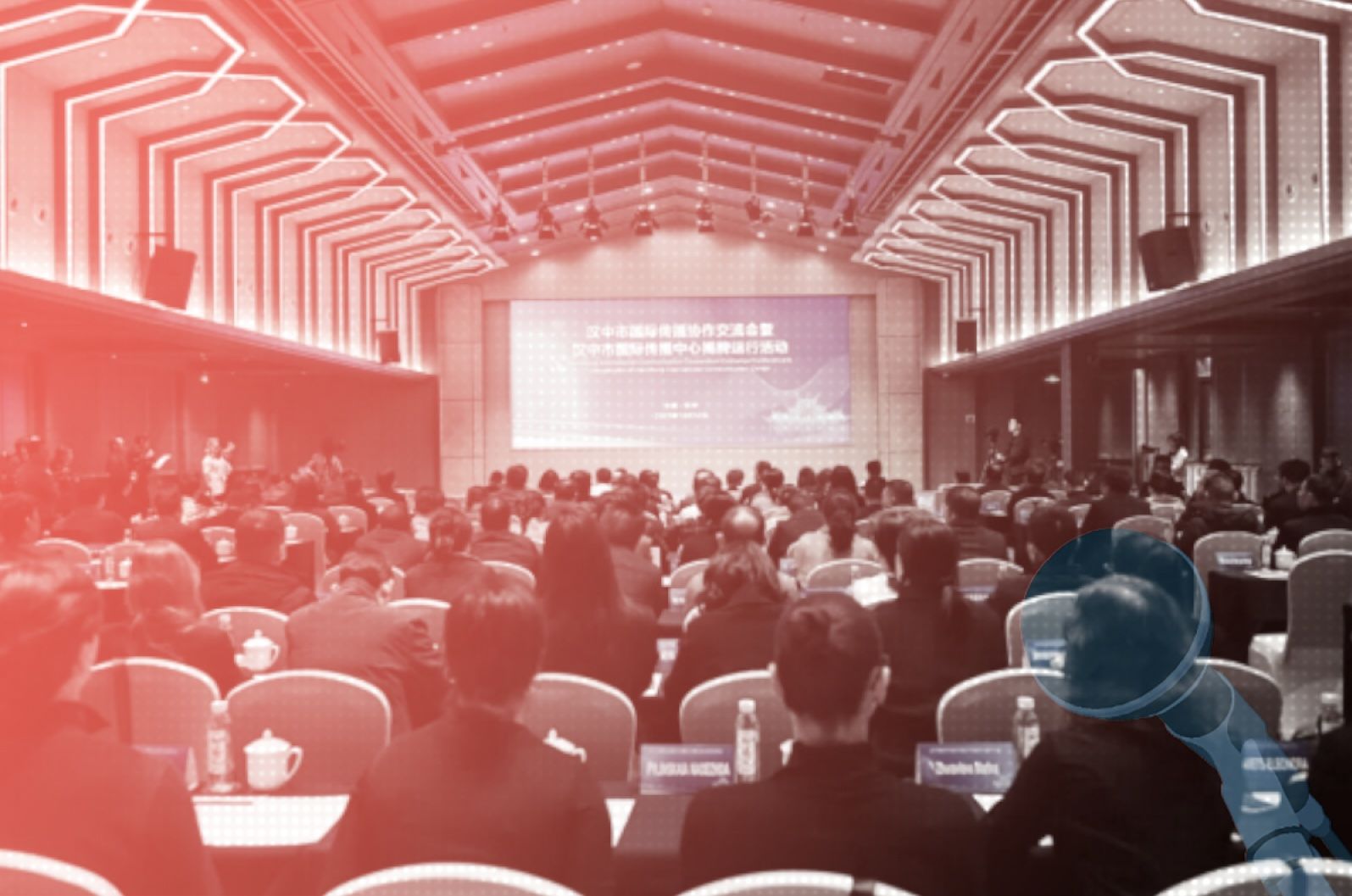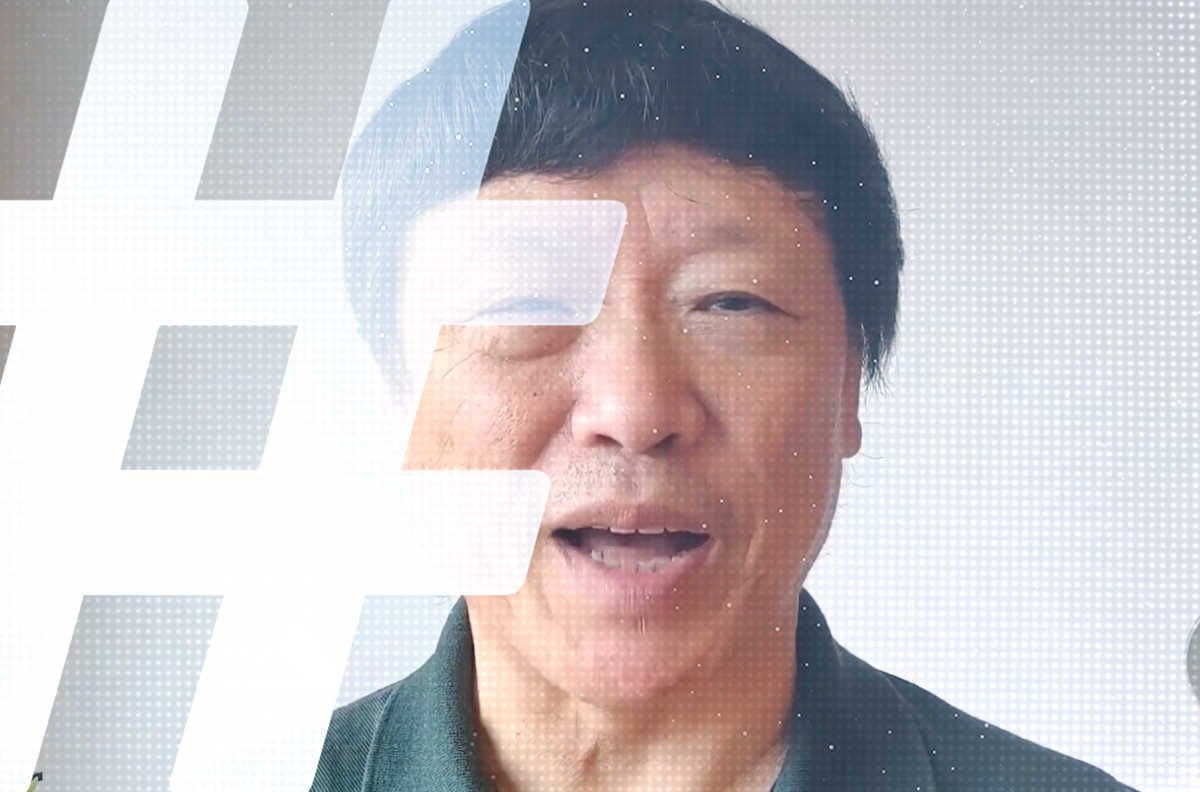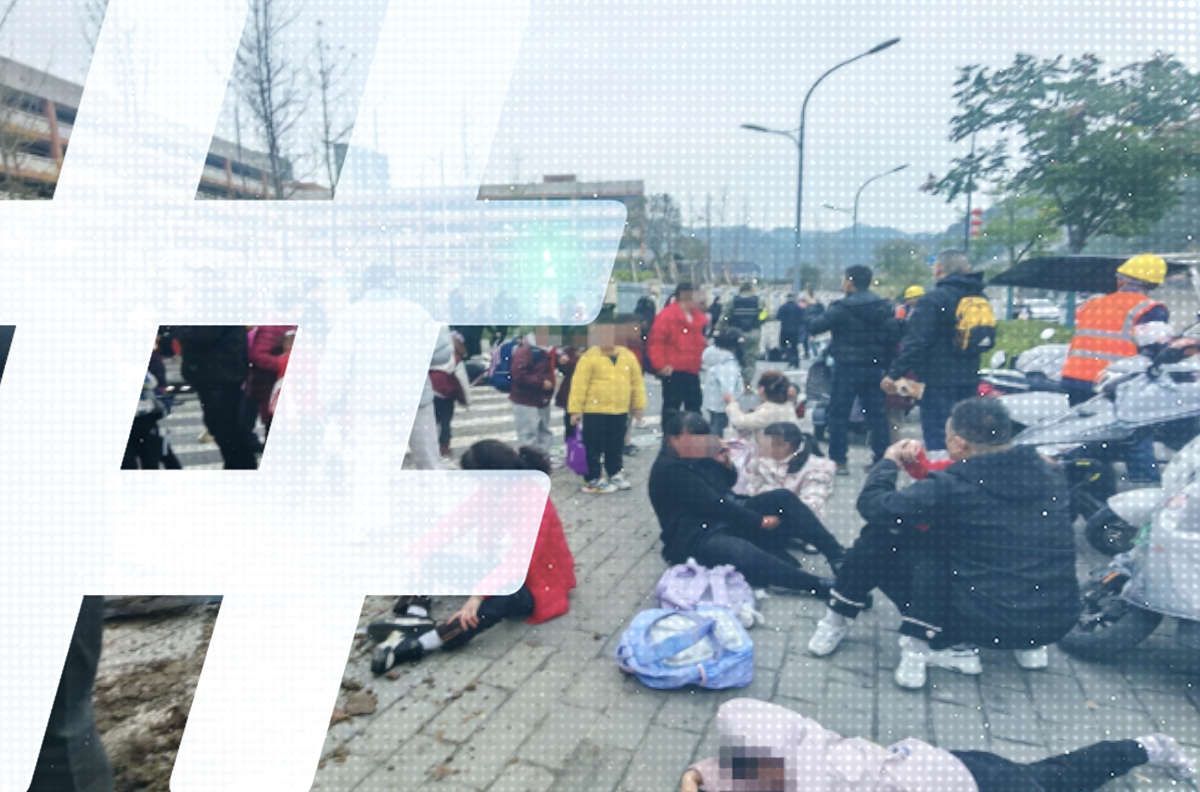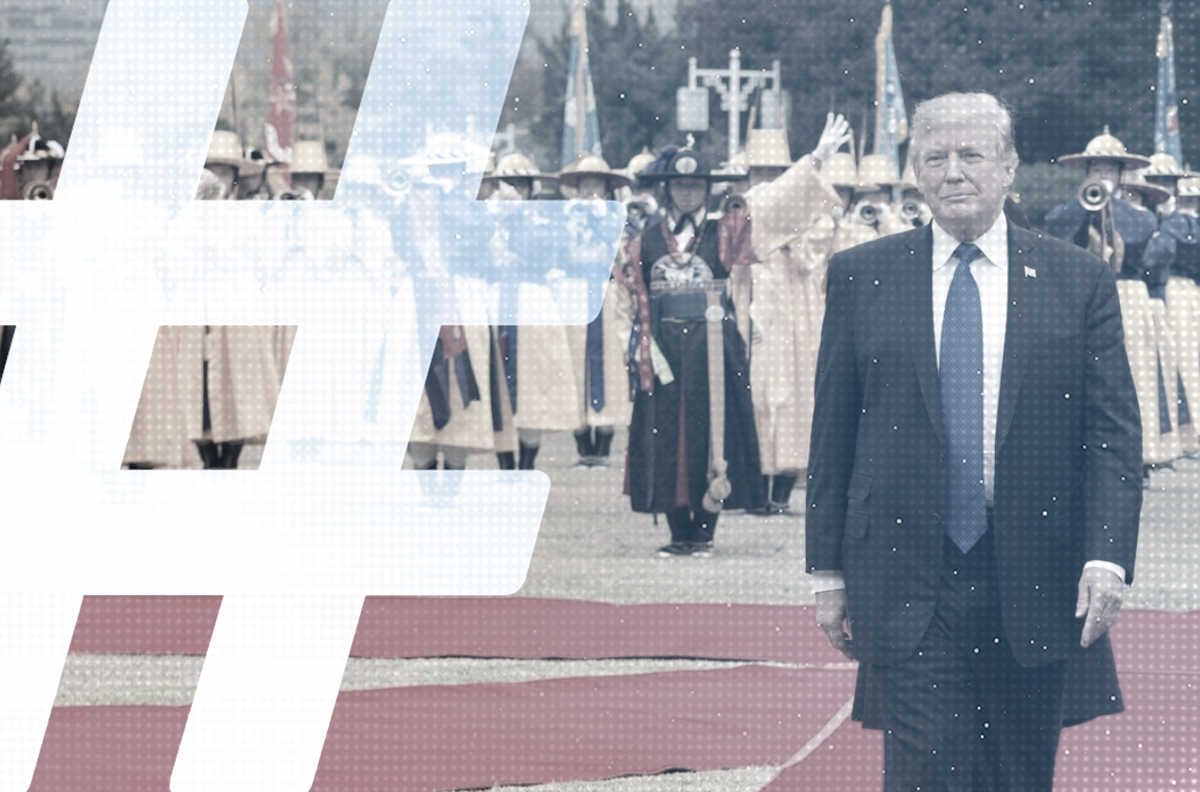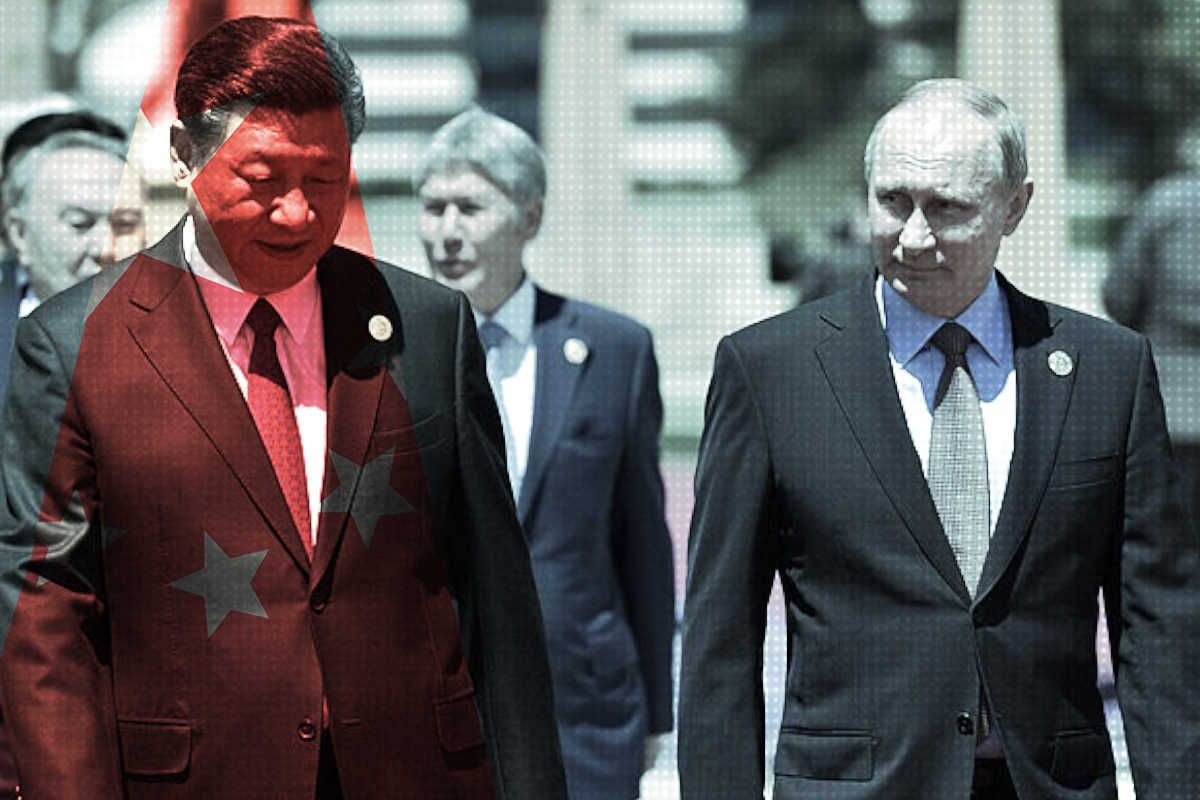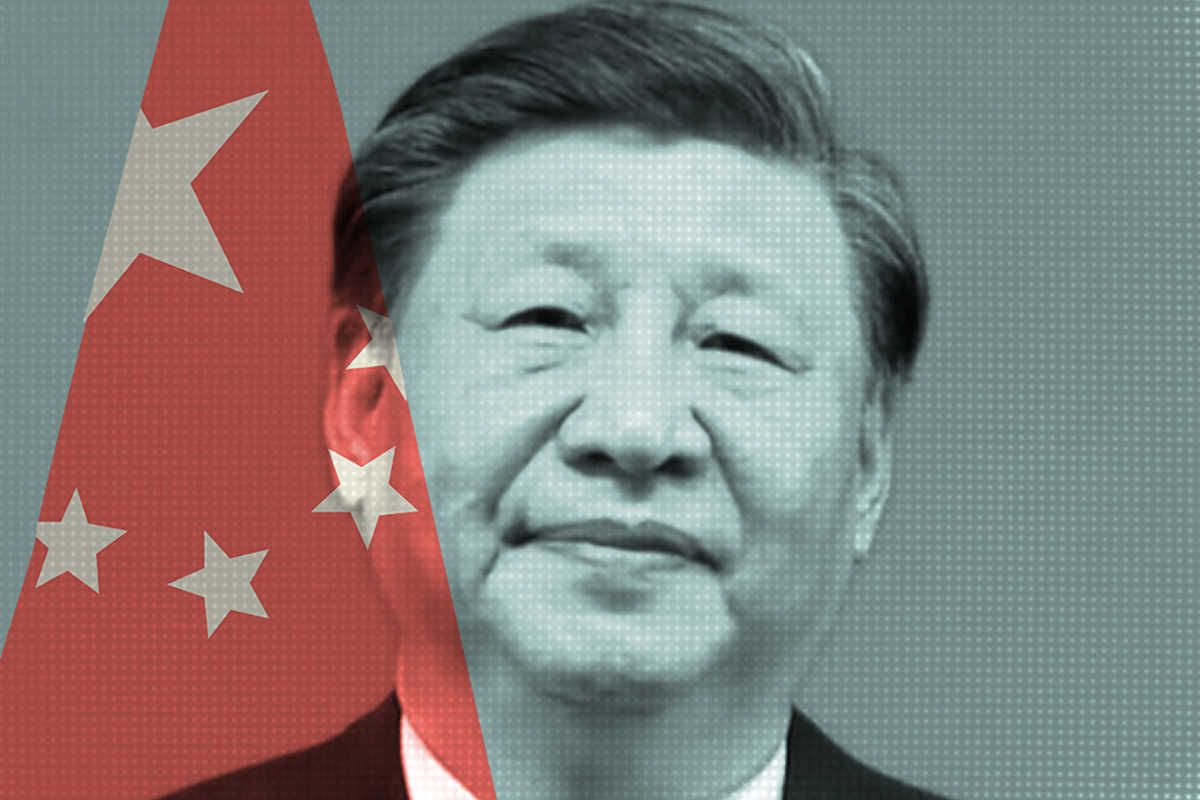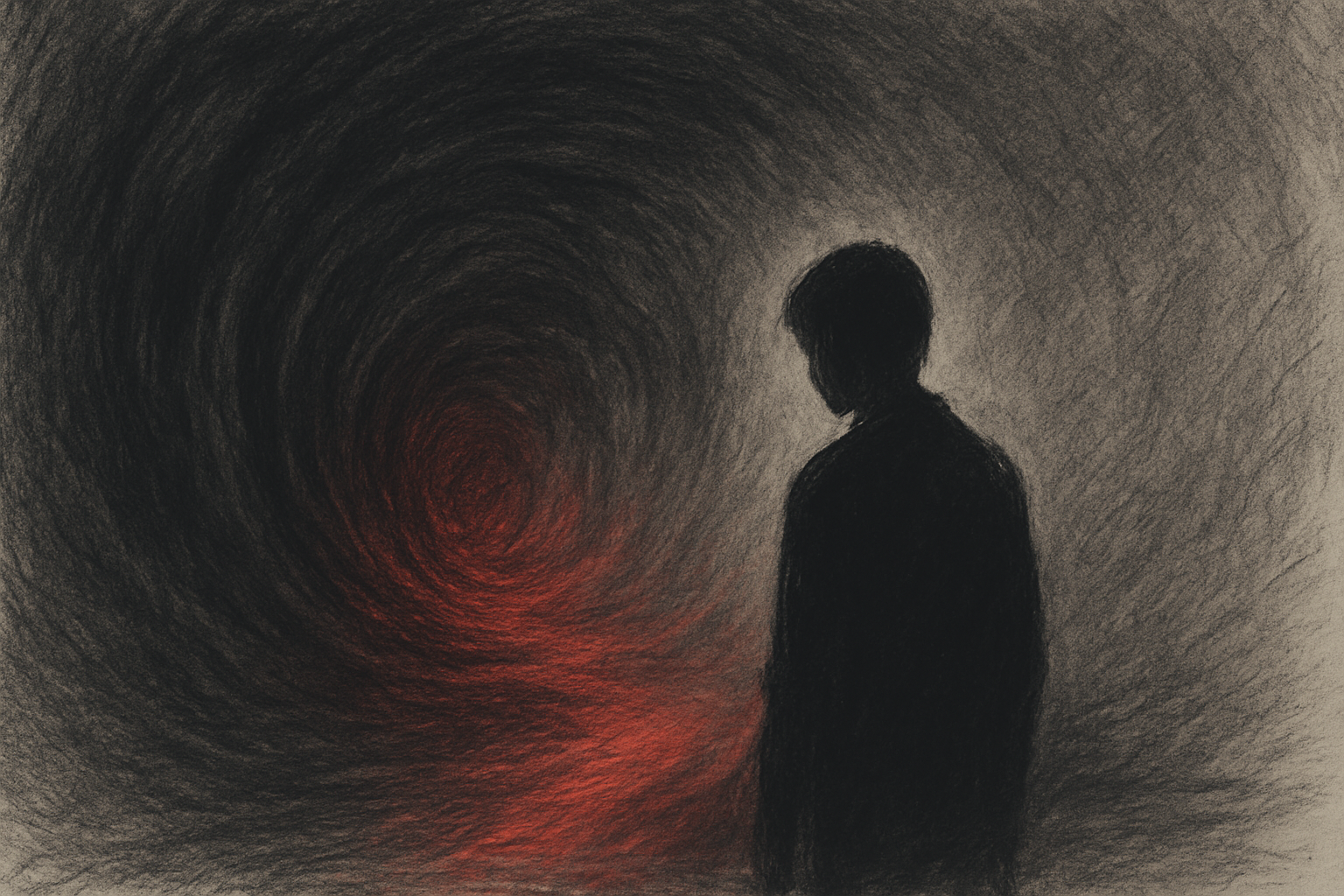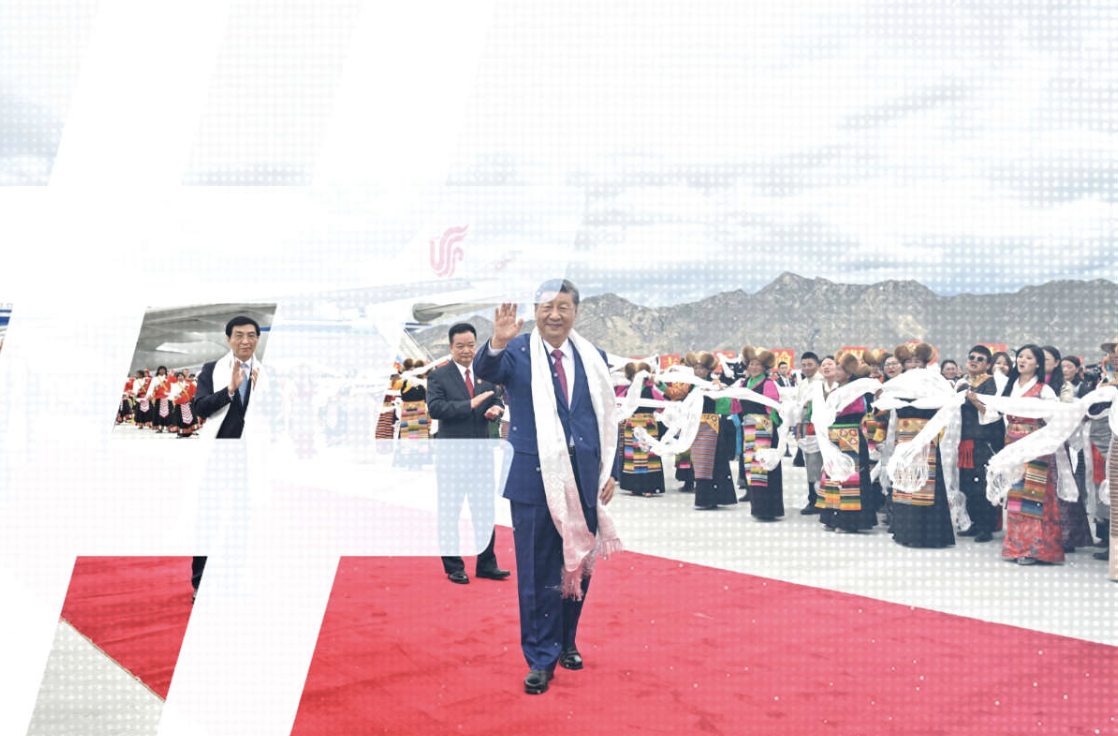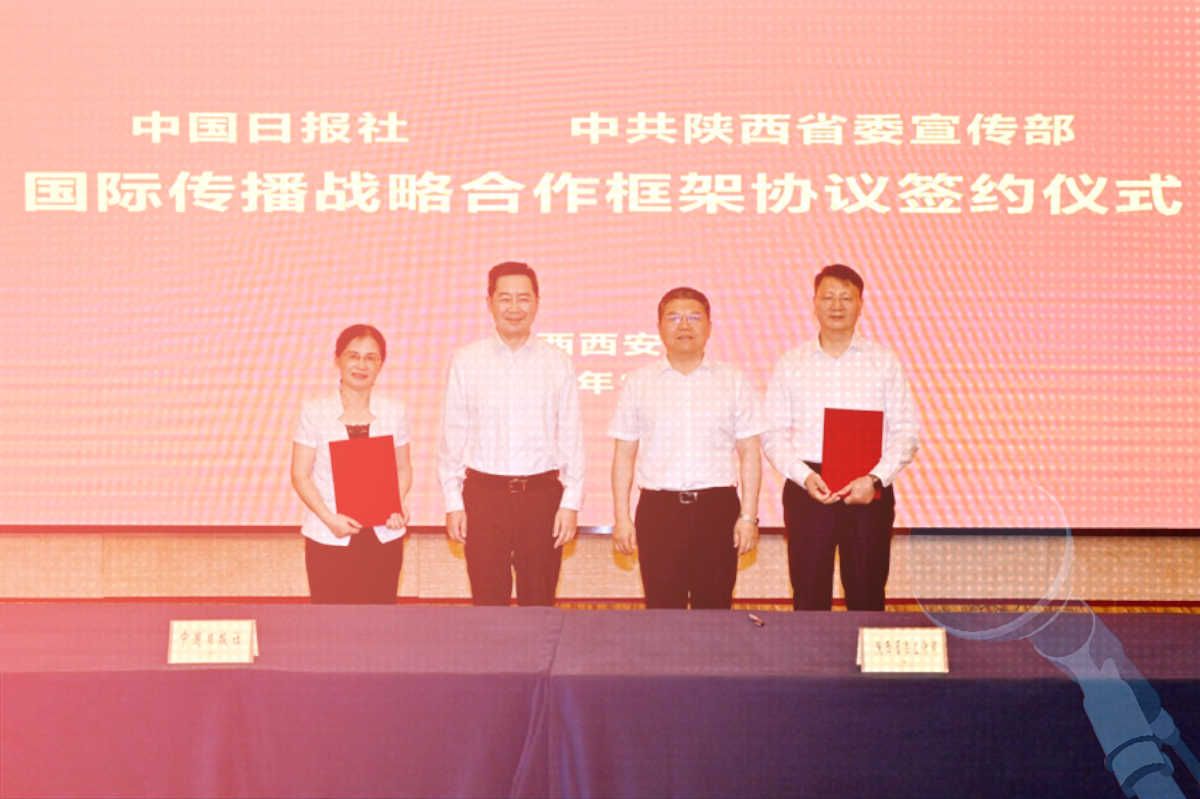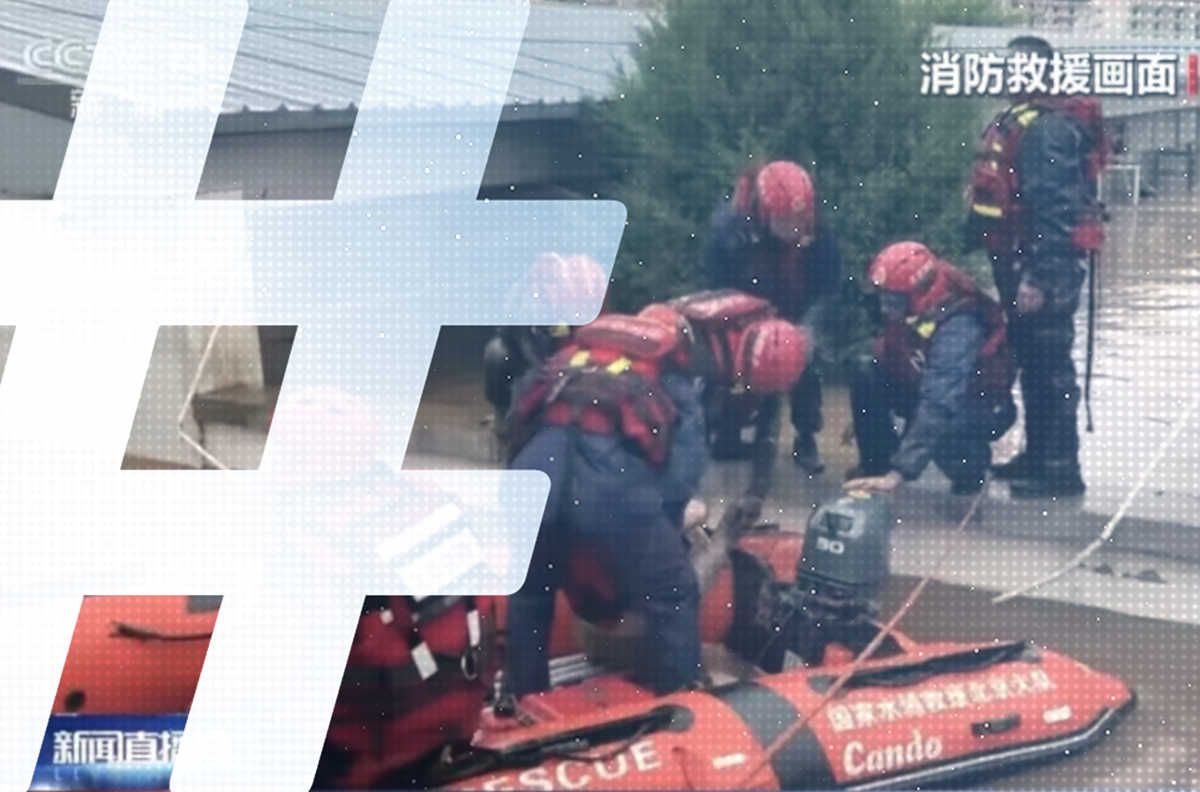Tracking Control
Breaking Beijing’s Script
On Sunday, amid China’s extended May holiday, four tour boats on a river in the southern province of Guizhou capsized as they were buffeted by powerful winds, throwing 84 tourists into the water. To date, 10 people are reported dead, according to reports from central and provincial-level state media, and the “aftermath handling” of the incident is ongoing.
So far, nearly every fact we know about the disaster that unfolded on the Wu River, one of the country’s longest waterways, comes from central-level state media, with most of the essential facts fed to the country by local government authorities who have a vested interest in moving on quickly from the story — and keeping prying eyes away from more serious underlying questions about responsibility. The incident in Guizhou’s Qianxi County (黔西县), a local tourism destination, is a classic example of how China has routinely handled breaking news stories since June 2008, when former President Hu Jintao outlined a media policy and approach called “public opinion channeling,” or yulun yindao (舆论引导).
But with at least one significant report published Monday offering clear evidence of possible local negligence — including the ignoring of an orange weather alert by scenic area management in Guizhou — this story also illustrates how China’s media landscape, while tightly controlled, is never monolithic. Even within defined boundaries, individual outlets can occasionally find ways to push beyond boilerplate coverage and introduce more complex perspectives, creating cracks in the otherwise uniform narrative.
The “channeling” approach arose nearly 17 years ago in response to the rapid development of breaking stories on the internet and through a new generation of metro commercial newspapers that were more enterprising, often sending reporters directly to the scene to report. Serious breaking stories such as the Brick Kiln Scandal frequently took the leadership by surprise. They understood that while they could not completely shut news down — which could leave a news vacuum and create serious blowback — they could steer the narrative by releasing information selectively, combined with traditional controls.
According to this playbook, which is meant to establish the dominance of information from local authorities and central state media, commercial media outlets are ordered away from the scene and prevented from doing on-the-spot reporting, while central media are used to manage the narrative. As the official story spreads down and out from the central media, government talking points are amplified by media outlets at every level. The emphasis remains on basic facts and storylines, such as the efforts of the government and rescue crews — drawing attention away from more human stories, and from deeper questions about how and why.
In the years immediately after Hu Jintao introduced his new “channeling” approach, it failed miserably by many accounts, chiefly because a new generation of real-time social media tools, including microblogs like Weibo, were enabling rapid communication of breaking stories — like the 2011 high-speed rail collision — by ordinary people. Early in the Xi Jinping era, however, it seemed that the leadership had successfully applied the strategy to silence the media. One of the most egregious early examples was another tour boat tragedy, the capsizing in 2015 of the Oriental Star.
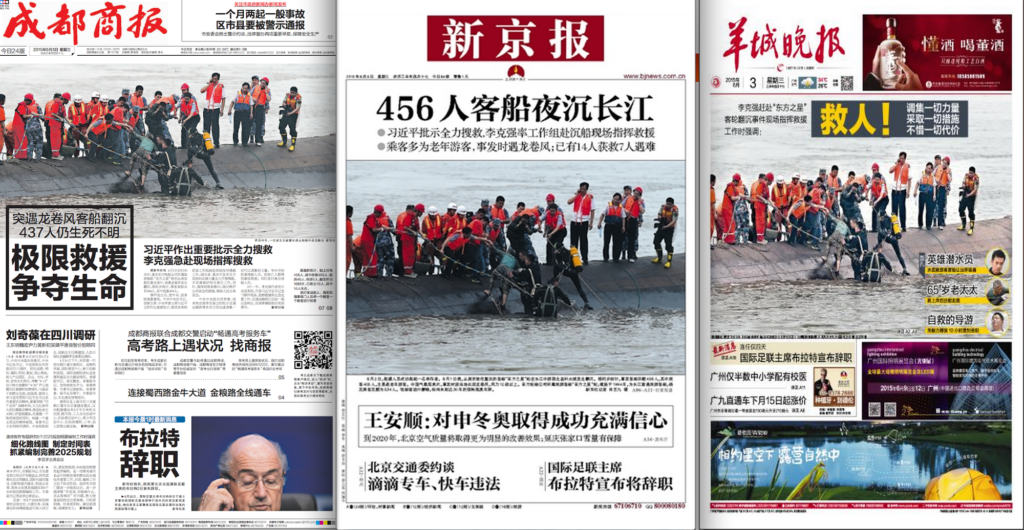
In 2025, even as the information landscape has undergone a dramatic transformation from two decades ago with a profusion of social media platforms and AI-powered content generation tools, China’s playbook on breaking stories remains remarkably unchanged. The Party’s ability to maintain narrative control despite technological shifts demonstrates how effectively institutional power can adapt to — and ultimately harness — digital transformation. But there are also limitations.
Xinhua Takes the Lede
At the heart of China’s official information stream as disaster struck in Guizhou over the weekend was the central government’s Xinhua News Agency (新华社). Issued on May 4, the day of the tragedy, the agency’s official release, or tonggao (通稿), emphasized the action of the leadership, “Xi Jinping Issues Important Instructions on the Capsized Boat Accident,” the headline began. Xi emphasized the need to “do everything possible” in the rescue effort, and to ensure “resolutely curb the frequent occurrence of major safety accidents.” As typical under Xi Jinping, these “important instructions” were the prerogative of the top leader, while the country’s number two, the premier, made “written comments” (批示) to signal action from the top down.
This Xinhua release established the standard for coverage across the country. On May 5, Guizhou Daily (贵州日报), the official mouthpiece of the top Chinese Communist Party leadership in the province where the tragedy occurred, ran the story on the front page, directly under the masthead. But this was the Xinhua release verbatim, with not a single character changed or added — identical to treatment in the CCP’s official People’s Daily newspaper.
Directly below the story on the central response in the Guizhou Daily was a boilerplate release from the provincial leadership, again stressing action — but more than that, action following Xi’s command: “The Provincial Party Committee And Provincial Government Rapidly Implement General Secretary Xi Jinping’s Important Instructions and Directives to Properly Handle Rescue and Response Work.”
The newspaper included no images at all from the scene of the tragedy. The rest of the front page, meanwhile, was dominated by Xi Jinping’s diplomatic trip to Russia.
In the Guiyang Daily (贵阳日报), the official CCP-run newspaper run by the major city closest to the scene of the tragedy, the central-level release again leads — but this time in the space directly to the right of the masthead, known as the “newspaper eye,” or baoyan (报眼). The headline only is included, with a jump to an inside page, and the Xinhua release about Xi’s visit to Moscow is smashed directly below it. Almost callously, one might say, no other attention is given to the tragedy on the Wu River. In fact, the most prominent story at the center of the page highlights local industrial progress. There is even a story, with image, directly to the right that promotes holiday tourism. “Visitors Flock Continuously to Huaxi Park,” it reads.
This pattern of central coverage of the tragedy, parroting Xinhua, could be seen clearly also in neighboring provinces and regions — where in the early 2000s one might have expected some more adventurous coverage from media operating under different local jurisdictions. To the north, in the bustling municipality of Chongqing, the local official paper, Chongqing Daily (重庆日报), again ran the Xinhua release verbatim at the top of the page. This pattern was consistent across regional CCP-run publications, highlighting the discipline the leadership exercised over this breaking story.
In more vibrant media ecosystems far from the scene of the tragedy in Guizhou province, the majority of outlets in Shanghai and Beijing were no less obedient. The Beijing News (新京報), a newspaper and online outlet under the city-level leadership in the capital that has often ventured its own more in-depth coverage of food safety and other issues, published the exact same information as the above accounts on May 5, with the simple headline “Guizhou Qianxi City Boat Capsizing Accident Causes 9 Deaths, 1 Person Missing.”
In its early morning story on May 5, the day after the incident, The Paper (澎湃新闻), a commercial digital outlet under the Shanghai United Media Group (SUMG), used several official releases, including those from the central leadership and the Guizhou provincial leadership to cobble together a single report that coldly related the facts: 9 people confirmed dead; 70 being treated in hospital; 4 safe and without injury; a list of the various government offices responding under the Guizhou CCP and the Guizhou government (listed always in that order).
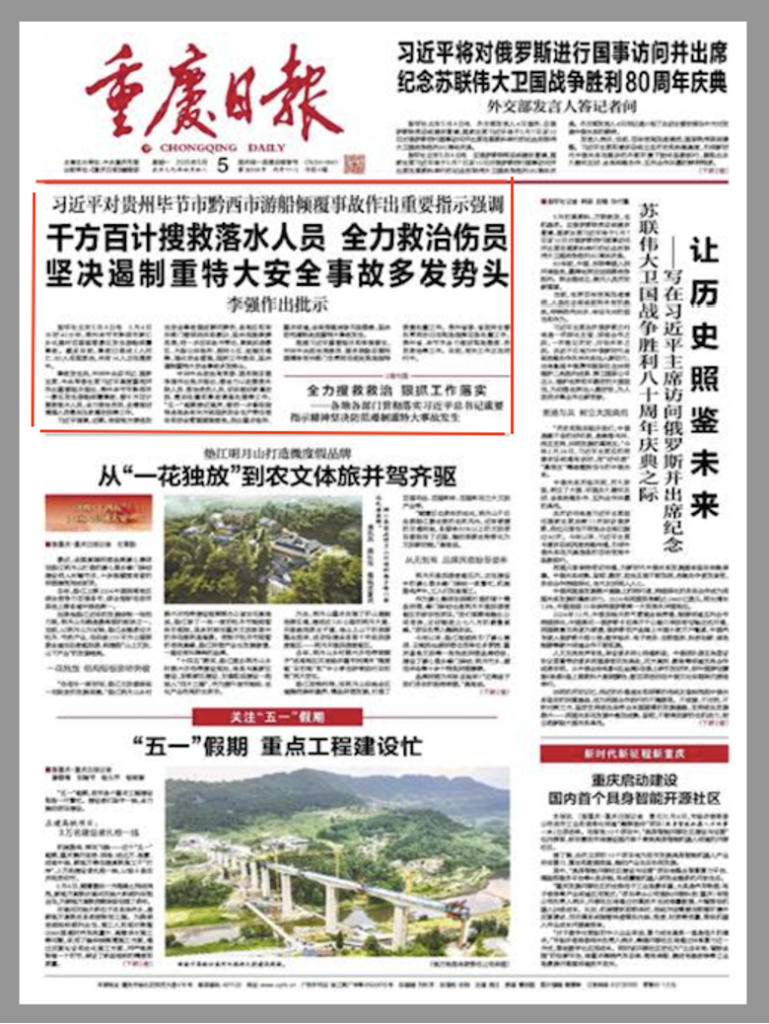
But the clear tendency for outlets to cleave closely to the Xinhua account did not necessarily mean that all outlets were under an explicit order against more in-depth reporting, and in at least one case on Monday reporters endeavored to tell a more compelling story and offer further context. Toward the end of the news day on May 5, more than 24 hours after the disaster, the Shanghai Observer (上观新闻), a digital outlet founded in 2014 under Shanghai’s state-run Liberation Daily (解放日报) — under the same press group as The Paper — published a more probing piece featuring firsthand accounts from survivors. The article documented the rapidly changing weather conditions, inconsistent life jacket policies on different vessels, and revealed that an orange hail alert had been issued two hours before the accident but was largely ignored by both tourists and possibly scenic area management.
The Shanghai Observer piece ran with a more colorful lede that was clearly distinct from the dry official Xinhua account, hinting (as state media coverage rarely does) at the human dimensions:
Around 5 PM on May 4, as the boat docked safely away from the assault of gale-force winds, heavy rain and hail, Wen Lin posted to her social media circle. Looking back at the river as she disembarked, she discovered that a boat not far away had capsized. At that moment, having just escaped from a state of fear, Wen Lin didn’t yet realize she had just brushed shoulders with death. It wasn’t until that evening, when she saw the news and calls from relatives and friends began pouring in, that the reality hit. All night, feeling as though she had survived a catastrophe, Wen Lin barely slept.
There seems to be little question that Guizhou experienced freak weather on Sunday that contributed to the tragedy. In a post to his public account on the Netease platform on Tuesday, a chief forecaster at China’s National Meteorological Center reported that the Guizhou boat accident was caused by a rare, extreme downburst, with wind speeds reaching 44.7 meters per second — equivalent to a Category 2 hurricane or severe typhoon. A weather station located just two kilometers from the scene of the accident, said the forecaster, provided “extremely rare direct measurements” of the disaster-causing winds as they occurred.
But other accounts online, outside formal media reports, raised questions about the response, suggesting, like the Shanghai Observer report, that the loss of life owed not just to natural disaster. In a post to his public account on Netease today, a journalist reported that the Guizhou boat accident could have been avoided had weather warnings been heeded and tourists adequately informed.
Voices like these are a reminder, even in the face of state controls, that questioning journalism remains vital. Without probing investigation of safety failures and accountability for ignored warnings, similar tragedies will continue to occur — the predictable cost of a system that prioritizes message control over public safety.

